Last Year Leaves with New Year Leaves
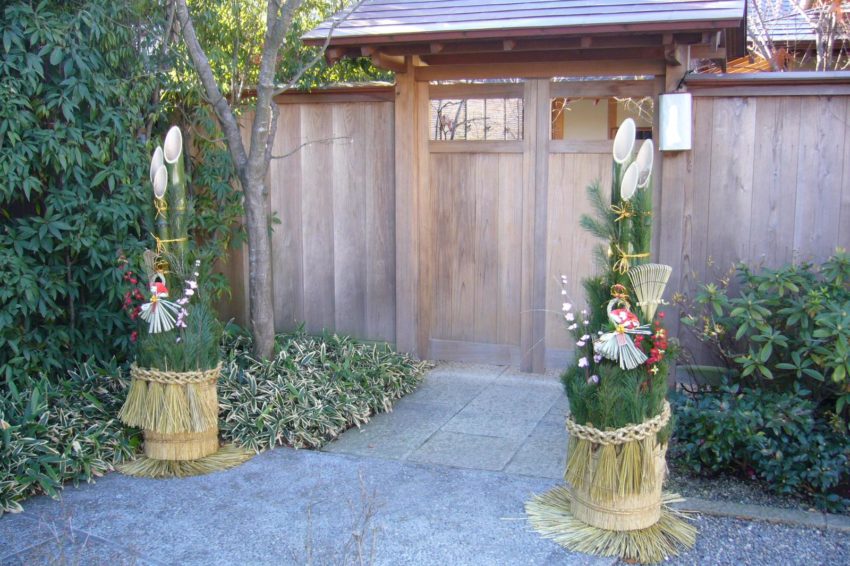
Top photo: katorisi – Own work, licensed under the Creative Commons Attribution 3.0 Unported license (CC BY 3.0 ) No changes or modifications were made. Wikimedia Commons Link
Happy 2022 from your friendly neighborhood ALT everyone! I hope you have had a great holiday season! Last December, I constructed a decoration named “kadomatsu”. It’s another New Year’s tradition and one that is worth trying yourself!
What’s Kadomatsu?
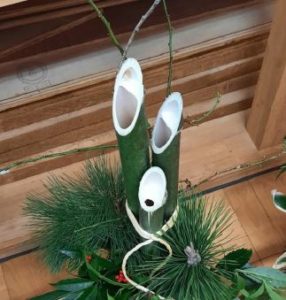 A kadomatsu, also known as “gate pine”, is a New Year’s decoration that is placed in pairs in front of houses to welcome the harvest gods.
A kadomatsu, also known as “gate pine”, is a New Year’s decoration that is placed in pairs in front of houses to welcome the harvest gods.
They are put outside the left and right sides of your door after Christmas and are regarded as temporary housing for deities or gods. When you cut the bamboo, you have to make sure you cut at the joint of the bamboo to make a “smiling face”.
The kadomatsu I made to the left is placed at the left side of the door and as you can see, the bamboo is cut so they look like they are “laughing”.
Let’s Make Kadomatsu!
Truth be told, you can just buy a Kadomatsu if you want (including miniature ones). But making them yourself is more satisfying! The process was pretty simple, pick six bamboo of roughly the same size:

Cut them at the joints to make the smiling face, then place them in a large can:
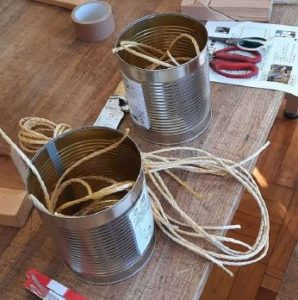
Wrap the can in decorative straw and tie a rope around the can. Also, place the bamboo (tied with rope) in the can and pack dirt in the can so the bamboo sit right in the middle:
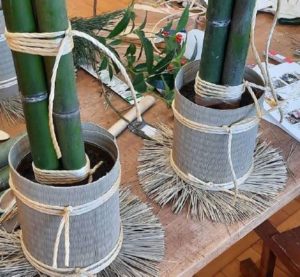
The Meaning Behind Kadomatsu
Kadomatsu designs in Japan are different depending on location, but most are made of pine tree, bamboo, ume tree sprigs and kale, which symbolize lifespan, prosperity, and determination, respectively. The final touch is to place a fan with the gold symbol “kotobuki” on it which means longevity.
Because the Japanese term “kadomatsu” has the kanji character for pine tree (“matsu”), pine is the primary plant used in decorating. The pine tree has been special to Japanese people since ancient times: they believe the spirits of the gods live in pine trees. So, even though bamboo is the most prominent, the pine tree is extremely important.
In terms of decoration, the bamboo is the most interesting. During the samurai period, bamboo was connected to kadomatsu. Bamboo was thought to be great to wish away sadness in life since it grows straight up to the sky, according to Japanese legend.
Plum and kale blossoms both have positive connotations, and they are often used as decorations. Plum flowers are a powerful and enduring plant since they bloom early in the year when the weather is pretty cold. The layering of leaves on the blossoming kale is seen as adding more and more good fortune.
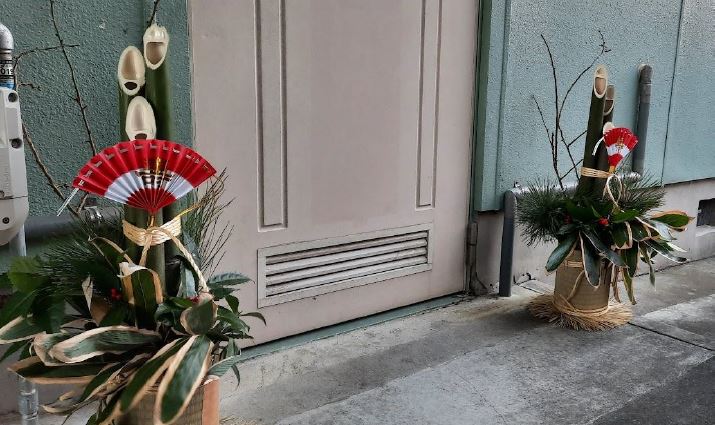
How to Display Kadomatsu
You can leave the kadomatsu in front of your door until January 7th or the 15th (in the Edo era they were placed until the 15th). The reason for kadomatsu during the New Year celebrations is to worship and greet the deity, who will then bring a plentiful harvest to farmers and bestow the blessings of the ancestors on everyone. The kadomatsu is burned after January 15 (or in some places, the 19th) to pacify the god or divinity and free them.
This was my first experience making kadomatsu, but hopefully it is a tradition I can continue into the future as well as learning many others. I hope you also get to experience the fun of making traditional Japanese decorations throughout the year! Happy New Year! Let’s make it a great one!
Photo Credits:
Top photo: katorisi – Own work, licensed under the Creative Commons Attribution 3.0 Unported license (CC BY 3.0 ) No changes or modifications were made. Wikimedia Commons Link
Additional photos provided by Natasha Davis
All other content (text) created by the original author and © 2022 MUSUBI by Borderlink
RELATED
-
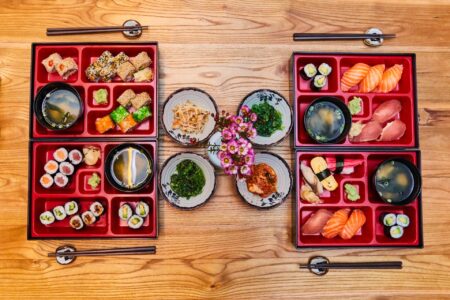
Osechi: A New Year’s Tradition
Top Photo by kofookoo.de on Unsplash Previous Version: Masaaki Komori used under the Creative Commons Attrib… -
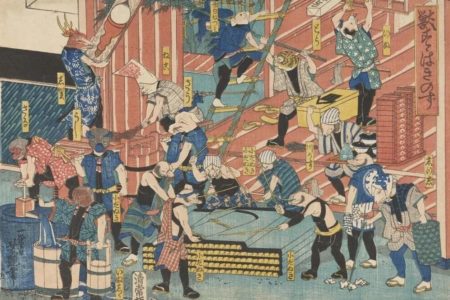
Osouji: The End-of-Year Clean-Up
Top Image: Illustration by Utagawa Yoshitsuya courtesy of the Ota Memorial Museum of Art The New Year’s … -
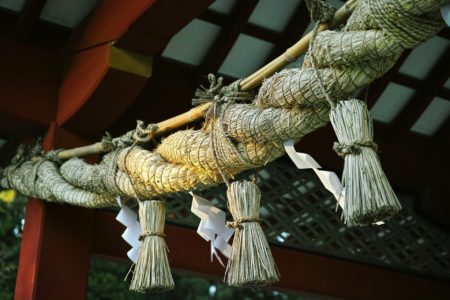
Have You Ever Heard of a “Two Year Visit”?
Top photo: koshinuke_mcfly on Pixabay Timothy shares his tale of how 2021 began with a visit to a shrine……
PEOPLE

Natasha Davis
From the USA
Globetrotter, but a 10 (non-consecutive) year resident of Japan



